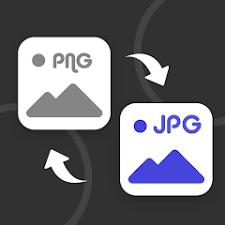
4 minute read
Finding the Right Image Compression Tool
Choosing the right image compression tool is essential in optimizing your website's images for faster loading times without sacrificing image quality. There are many tools available online, some of which are free while others require payment. However, it is important to look at factors such as compression ratio, image quality, ease of use and compatibility with different file formats.
One of the most popular and user-friendly compression tools is TinyPNG. It offers high-quality image compression with a great balance between file size reduction and maintaining visual fidelity. Another great tool is JPEG.io, which allows for bulk uploads and conversion from PNG to JPG while keeping the original resolution intact.
Advertisement
Remember that not all images are created equal, so it may be necessary to experiment with different tools on a case-by-case basis. Once you have found a compression tool that works well for your specific images, stick with it and enjoy faster page load times without sacrificing quality.
Steps to Convert PNG to JPG
To convert your PNG images to JPG, you will need to use an image conversion software or online tool. There are various options available, and some of them are free while others require a paid subscription. When selecting a tool, consider the image quality, compression level, and speed of the conversion process.

Once you have chosen your preferred tool, follow these simple steps:
1. Upload your PNG image into the converter software or online tool.
2. Select "JPG" as the output format.
3. Adjust the compression level if necessary; higher compression results in smaller file size but may compromise image quality.
4. Save the converted JPG file onto your computer or cloud storage.
It's essential to maintain high-quality images even after conversion to ensure optimal website performance. Test the newly converted JPG images on different devices and screen resolutions before uploading them onto your website.
How to Optimize JPG Images for your Website
Now that you have successfully converted your PNG images to JPG, it's time to optimize them for the web. The first step is to ensure that your images are properly sized. An oversized image can drastically slow down your website’s load time, which can lead to a poor user experience. Ideally, you want your images to be no larger than they need to be without sacrificing image quality.
Next, you’ll want to compress your JPG images without compromising their quality. There are many free online tools available that will compress your images without reducing their resolution or pixel count. Some popular tools include Tiny PNG, Kraken.io, and Optimizilla. Keep in mind that every image is different and may require a unique level of compression.
In addition, consider using lazy loading on your website’s images. Lazy loading delays the loading of noncritical content (such as images) until the user scrolls down to view it. This can significantly improve page speed and reduce bounce rates. Overall, optimizing JPG images for the web is crucial for improving website performance and user experience.
Best Practices for Image Optimization
When it comes to image optimization, there are a few best practices that can help ensure your images load quickly while still looking great on your website. First, aim to keep your images as small as possible while still maintaining their quality. This includes compressing your JPG images and reducing the number of pixels in overly large images.
Another best practice is to use descriptive filenames and alt tags for all of your images. This not only helps with accessibility but also allows search engines to better understand the content of your page. Additionally, consider using responsive image techniques to serve different versions of an image depending on the user’s device and screen size.
Finally, always test your optimized images before publishing them live on your website. Use tools like Google Page Speed Insights or GT metrix to check for any remaining issues with image optimization or loading speed.
Incorporating these best practices into your image optimization strategy can help improve both the user experience and SEO performance of your website.
Testing Image Quality and Loading Speed
After optimizing your images, it's important to test the quality and loading speed. Poor image quality can negatively impact user experience, while slow loading times can increase bounce rates. You can use several tools to check how your images are performing on your website.
One such tool is Google's Page Speed Insights. This tool provides a detailed analysis of your website's performance, including image optimization. It also offers recommendations to improve overall performance and user experience.
In addition to using a tool like Page Speed Insights, consider conducting user testing with individuals who match your target audience. Ask them about their experience with the images on your site – are they clear, impactful, and adding value? Are they loading quickly enough? Taking this extra step will allow you to fine-tune your image optimization strategy and ensure that the visuals on your website are enhancing rather than detracting from the overall user experience.
The Impact of Image Optimization on SEO
It's no secret that website loading speed is a critical factor in search engine optimization (SEO). But did you know that image optimization plays a significant role in your website's loading speed? According to research, websites with faster loading speeds are more likely to rank higher on search engine results pages (SERPs). This means that optimizing your images to reduce their file size can have a positive impact on your website's visibility and overall SEO performance. When it comes to image optimization, there are several best practices that you can follow to ensure that your images do not negatively impact your website's loading speed. These include reducing the file size of your images, compressing them without sacrificing quality, and using descriptive filenames and alt text. By implementing these practices, you can improve your website's SEO performance while also providing a better user experience for your visitors.


